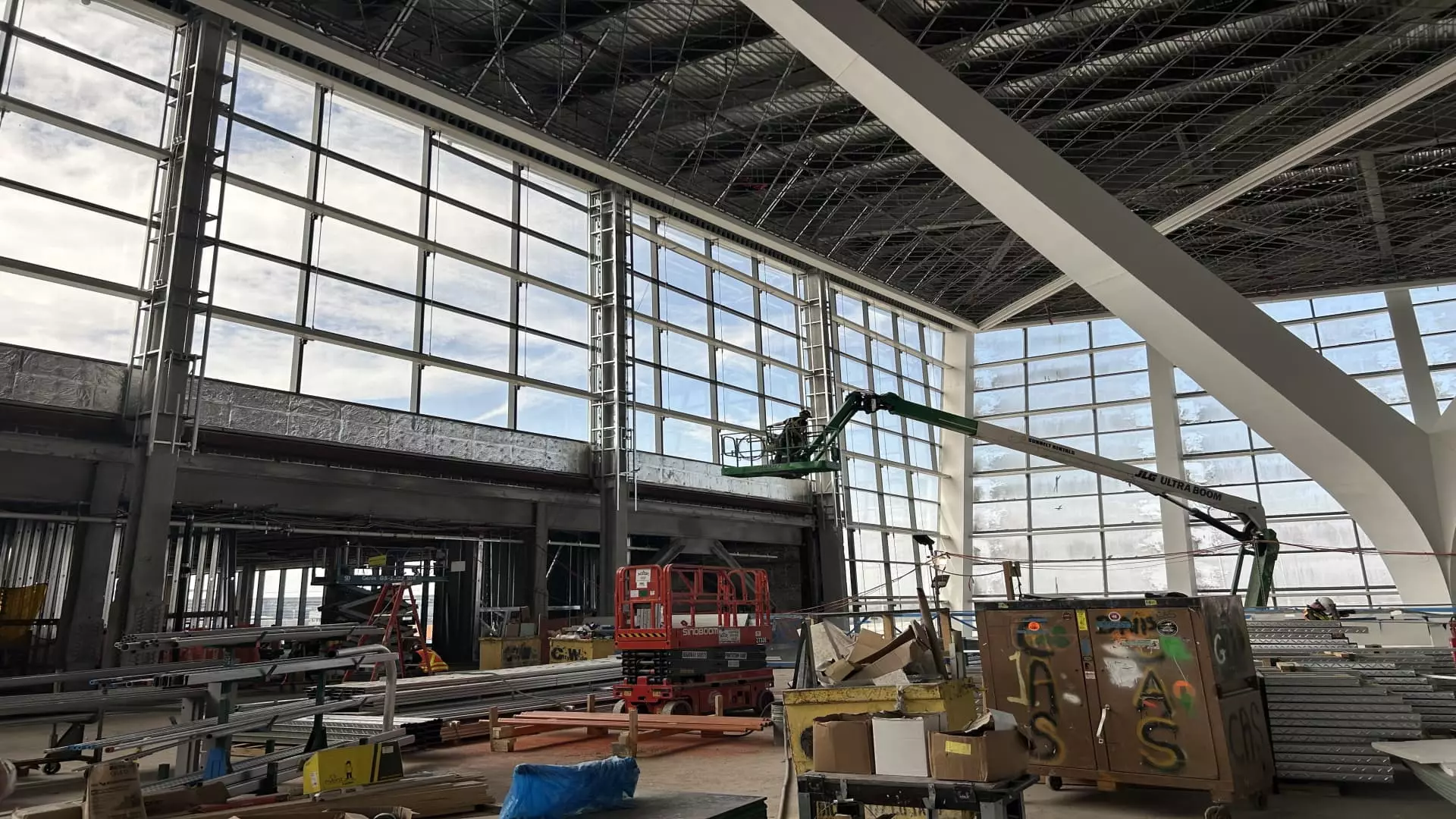The freshly announced $9.5 billion Terminal 1 at JFK represents a tremendous financial investment, yet beneath its shiny veneer lies a series of questionable priorities and overestimations. While the project promises a state-of-the-art experience for international travelers, the broader implications of such an extravagant overhaul evoke skepticism. Rarely do such projects truly benefit the average traveler or the surrounding community; instead, they often serve as symbols of corporate or political ambitions, disconnected from the grounded needs of millions who rely on these airports daily. The grandiosity of Terminal 1, designed to mirror a butterfly’s wings and bathed in “light,” may impress architects and officials, but it risks becoming a monument to excess rather than a functional utility for travelers.
Costly Infrastructure at What Cost?
The $19 billion spent across JFK’s entire overhaul raises questions about priorities amid a country facing critical infrastructure deficiencies elsewhere. Despite the eye-catching figure, it’s essential to critically view these expenditures as a reflection of political extravagance rather than strategic necessity. U.S. airports, nationally, face an urgent need for over $170 billion worth of upgrades through 2029, yet investment seems concentrated on glamorous new terminals that cater to an affluent global clientele rather than improving everyday commutes or regional accessibility. This disconnect highlights how airline and stakeholder interests often dominate the conversation, sidelining the actual users—local communities and everyday travelers—who might never set foot in such luxury.
Design as a Distracting Spectacle
The chosen architecture, inspired by a butterfly, strives to evoke beauty and innovation, but at what functional expense? The emphasis on design aesthetics—such as expansive, light-flooded spaces—may come at the cost of practicality. For example, the removal of basement customs lines sounds appealing on paper but does little to address the operational snarls that airports are notorious for. Moreover, the focus on future retail, dining, and duty-free shopping—especially the pioneering cash-and-carry concept—may serve corporate interests more than passengers’ needs. In real-world terms, such luxuries are often inaccessible to the average traveler who values efficiency and affordability over high-end retail therapy in transit.
Overpromising in a Changing Travel Landscape
While opening around the 2026 World Cup underpins an attempt to showcase American hospitality on a global stage, this tight timeline might prove overly optimistic. Major infrastructure projects tend to overrun budgets and schedules; relying on this date as a milestone could be setting up disappointment. More critically, the modern traveler’s demands are shifting away from the voluminous, luxury-laden terminals of the past. The promise of “flooded with light” spaces and duty-free perks does little to address the fundamental issues of congestion, environmental sustainability, or the inequities baked into the global travel system. At its core, JFK’s new terminal is a spectacle of excess and ambition, but one that could gloss over the pressing needs of a less glamorous, more practical infrastructure update.
The Illusion of Progress and the Reality of Displacement
Behind the glossy exterior lies a sobering truth: projects like JFK’s Terminal 1 often impose significant disruptions on local communities and airport employees. Kicking off with demolitions and construction that displace existing operations, the project risks marginalizing smaller carriers and regional users who may not fit into the grand international hub envisioned. Moreover, the transportation upgrades—though seemingly comprehensive—are unlikely to alleviate gridlock or reduce carbon footprints significantly, given the continued emphasis on expanding air travel rather than making it more sustainable.
Ultimately, JFK’s Terminal 1 embodies a paradox: an expensive showcase of modernity that simultaneously risks deepening societal inequities, misallocating resources, and prioritizing spectacle over substance. While it offers a glimpse into an aspirational future for international travel, the real test will be whether it serves as a catalyst for inclusivity, operational efficiency, and environmental responsibility—or simply remains a glittering monument to misguided priorities. The question remains whether such projects truly elevate the travel experience or merely mask systemic failures behind a facade of innovation.

